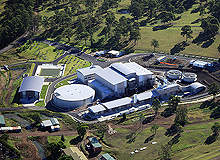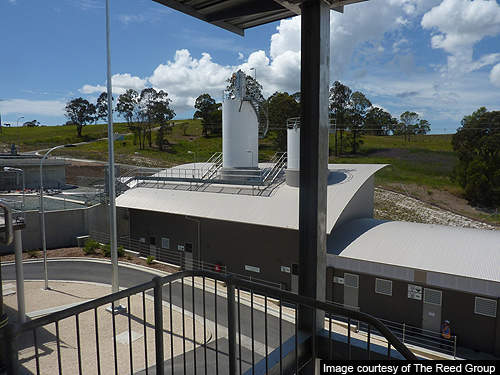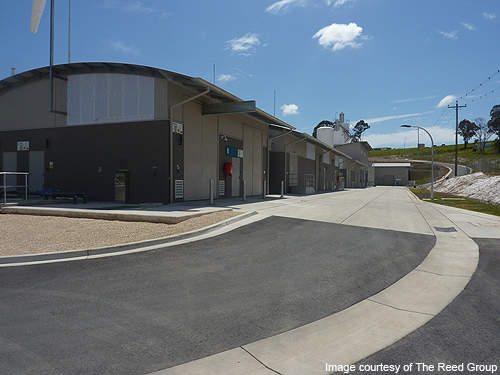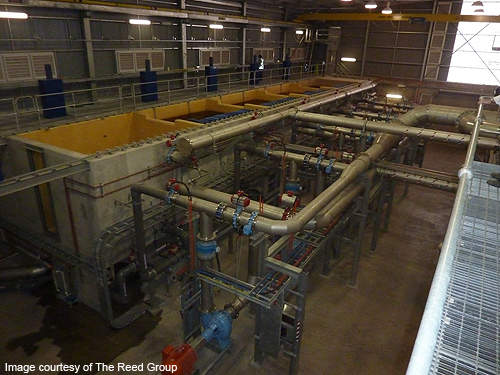
The Bootawa Dam Water Treatment Plant (WTP) in Taree, New South Wales (NSW), was officially opened in November 2010.
The facility was built next to the Bootawa Dam, which is the main water storage facility for the Manning-Great Lakes region.
Construction of the plant was started in 2007 by the water utility company MidCoast Water, and total investment in the project was $82m. The WTP has a capacity to process 60m litres of water a day, with provision to expand to 75m litres in future.
Purpose of project
The new plant was built to address the long-term issues affecting the Manning Water Supply. The quality of water was being affected by elevated levels of iron and manganese. In addition, algae and dirty water was present in the catchment.
Pre-treatment
The Bootawa dam features several structures used to pre-treat water. A floating mechanical de-stratifier located at the deepest part of the dam at 23m helps improve water quality.
The de-stratifier works by pulling surface water down and mixing the different water layers. This action generates a more even temperature.
Water is passed through an intake tower, where it is screened before being piped to the treatment plant.
Treatment
Water received at the WTP passes through the filtration area consisting polymer membrane filters. The fine straw-like fibres remove tiny impurities that are less than 0.2µ in size. The membranes also remove micro-organisms such as cryptosporidium and giardia.
Use of polymer membranes eliminates the need to add chemicals to water. The filters are backwashed every 30 minutes and the backwashed water is fed back into the plant for processing.
Filtered water is sent to the sealed ozone contact tank, which removes any compounds produced by algal blooms. Presence of such compounds can cause taste or odour problems. Treating with ozone also helps disinfect the water.
Water is then passed through the biologically activated carbon (BAC) filter, which consists of activated carbon. This absorbs any final contaminants present in the water and removes residual tastes or odours.
The final step in the treatment process is feeding the water into the chlorine contact tank. Chlorine is added to water in the tank to remove any remaining bacteria. Small traces of chlorine are left to ensure that water remains bacteria free until it reaches consumers.
The treated water is then sent to the treated water reservoir where small quantities of soda ash and fluoride are added. Soda ash is added for pH correction and fluoride is added for dental health.
Facilities
A raw water balance tank is part of the plant and obtains water either directly from the Manning River or the Bootawa Dam.
Water is piped to the WTP from the raw water balance tank which helps in ensuring flexibility of water supply.
A large inlet line can be operated automatically or manually to pipe the water.
Treated water is distributed through MidCoast Water’s pumping station 2B, which consists of seven pumps to supply water across MidCoast Water’s network.
From the pumping station, water is sent through the reticulation system, which carries water to more than 30 reservoirs and then onto homes and businesses.
Technology
The plant has been designed to be fully automatic. It is monitored and run by advanced supervisory control and data acquisition (SCADA) technology.
Key players
The architects of the WTP were EJE Architecture, while the engineering consultant was Worley Parsons.
The $49.5m construction contract was awarded to the Reed Group, which was responsible for the design, construction, and commissioning of the plant. The company carried out various civil works at the site, including construction of reservoirs, tanks, treatment units, amenities, drainage, and pumping stations.
Weir Minerals supplied a pump package for the plant. Thompsons, Kelly & Lewis supplied centrifugal pumps for the project.







